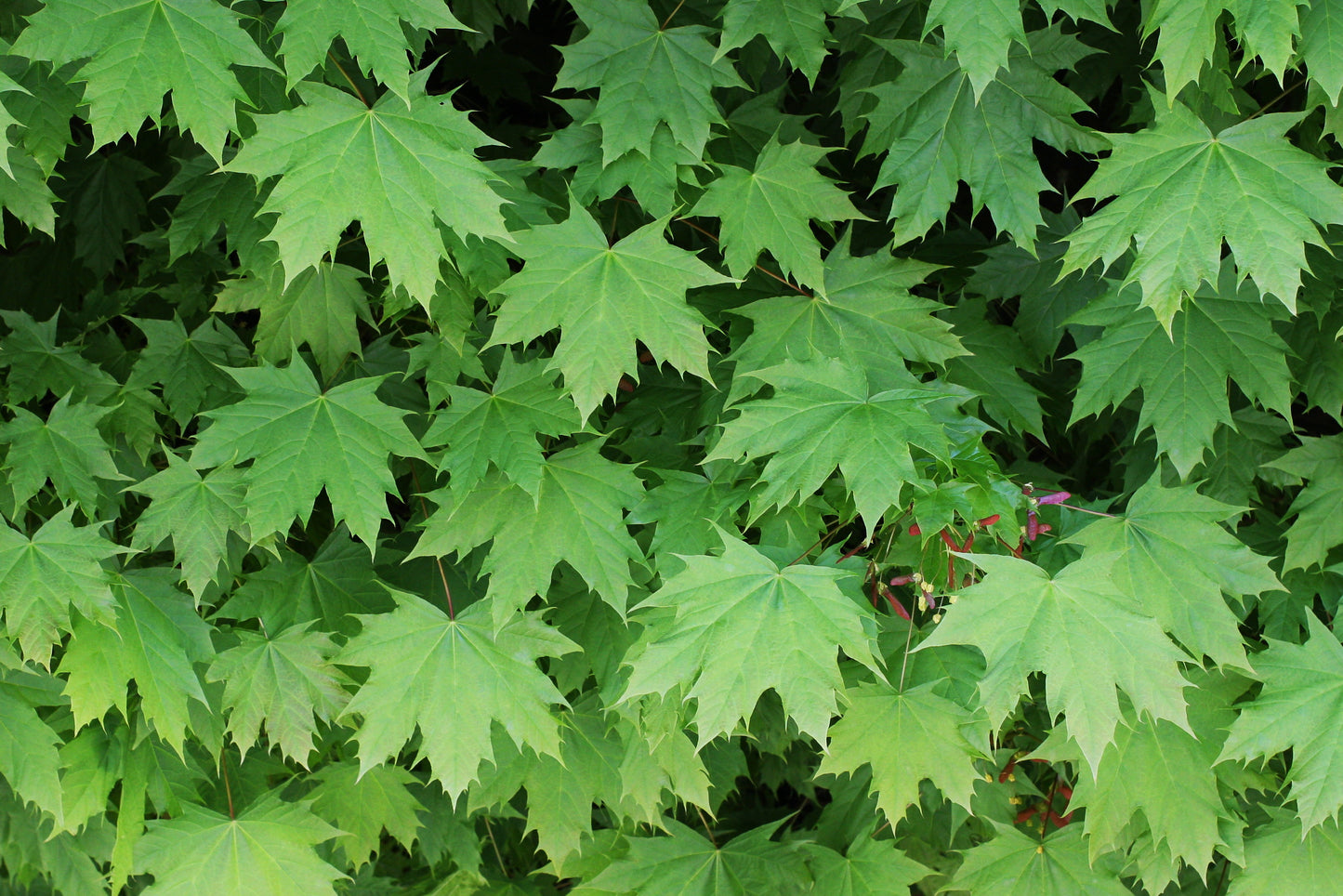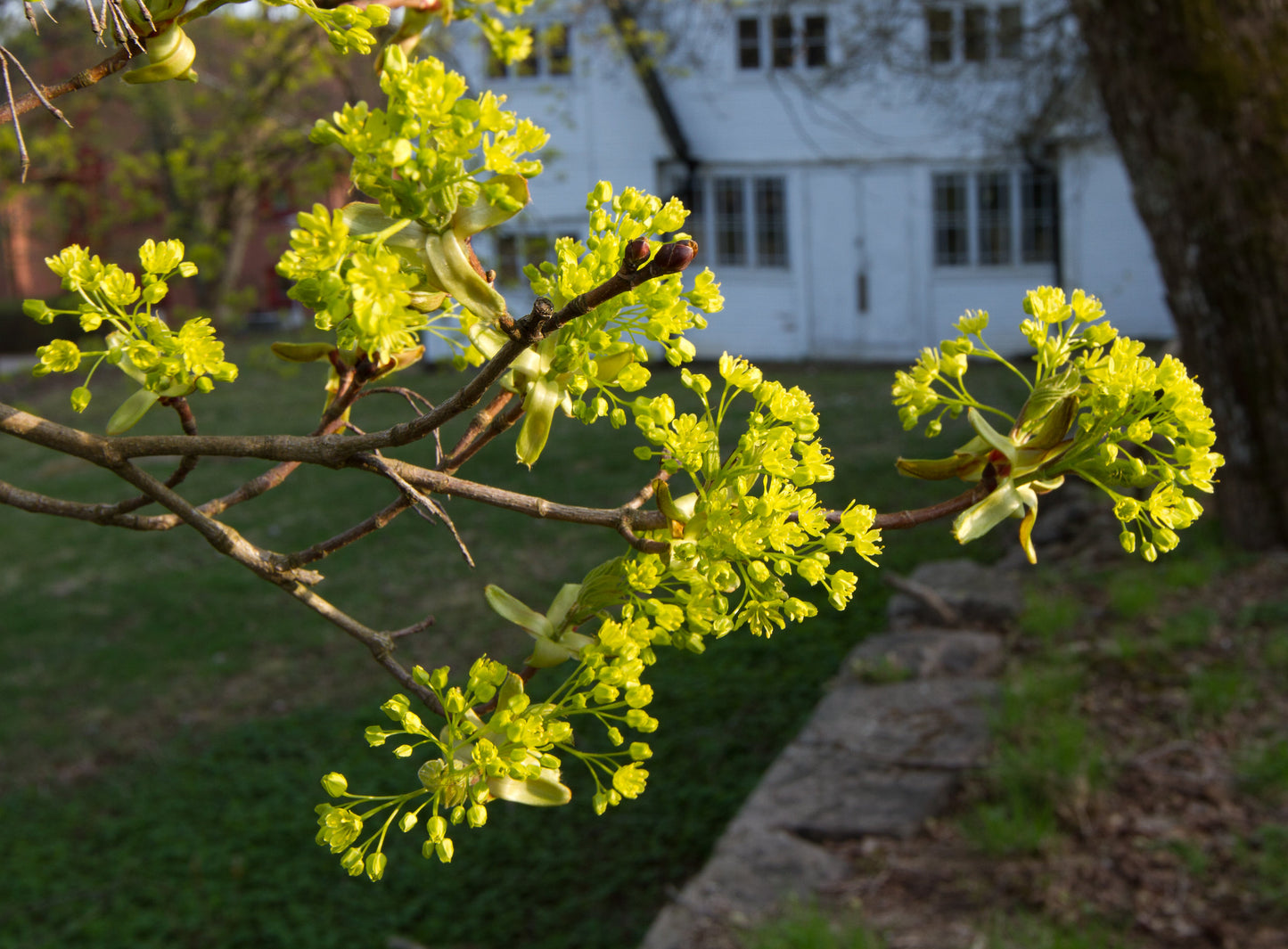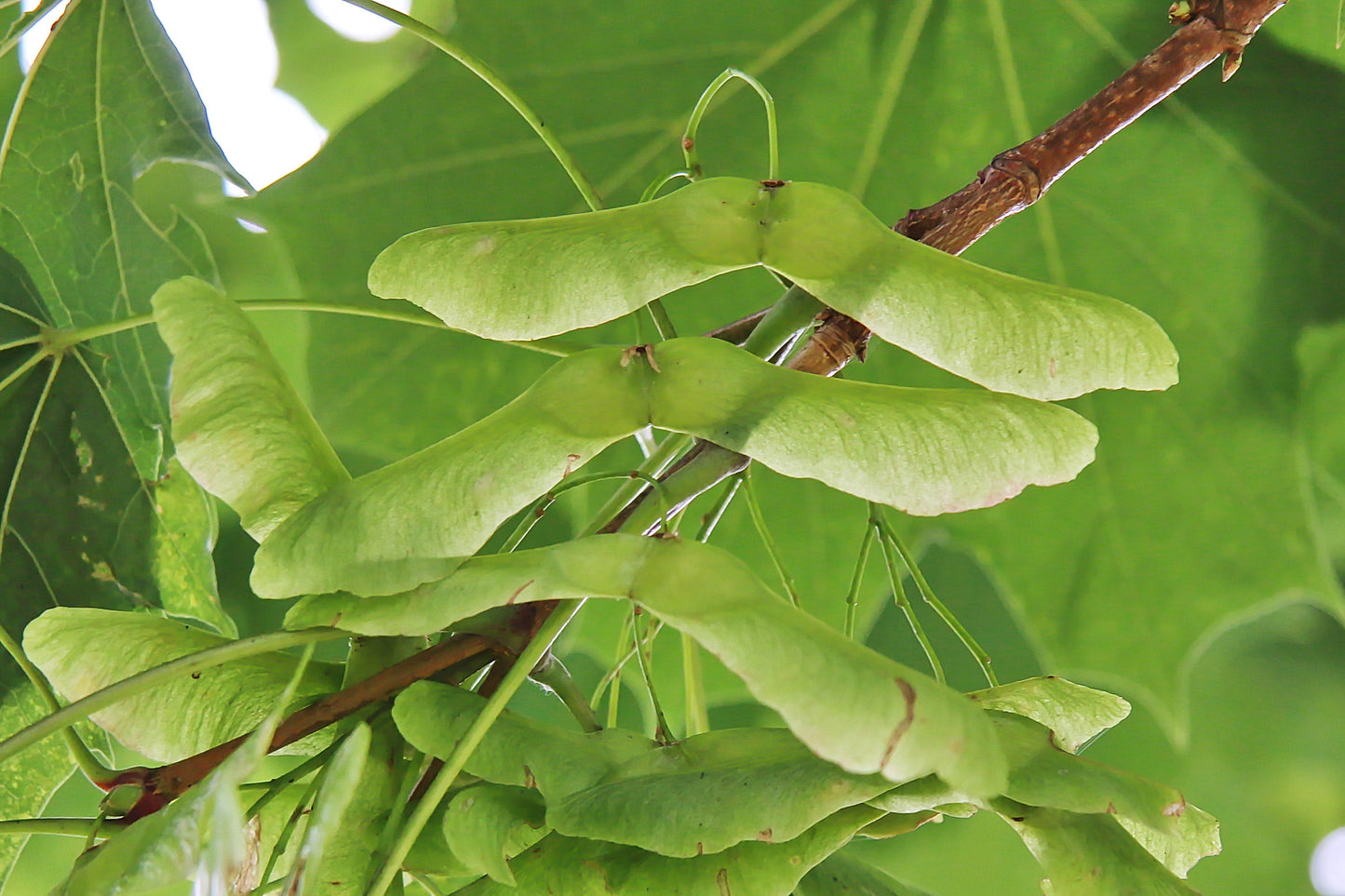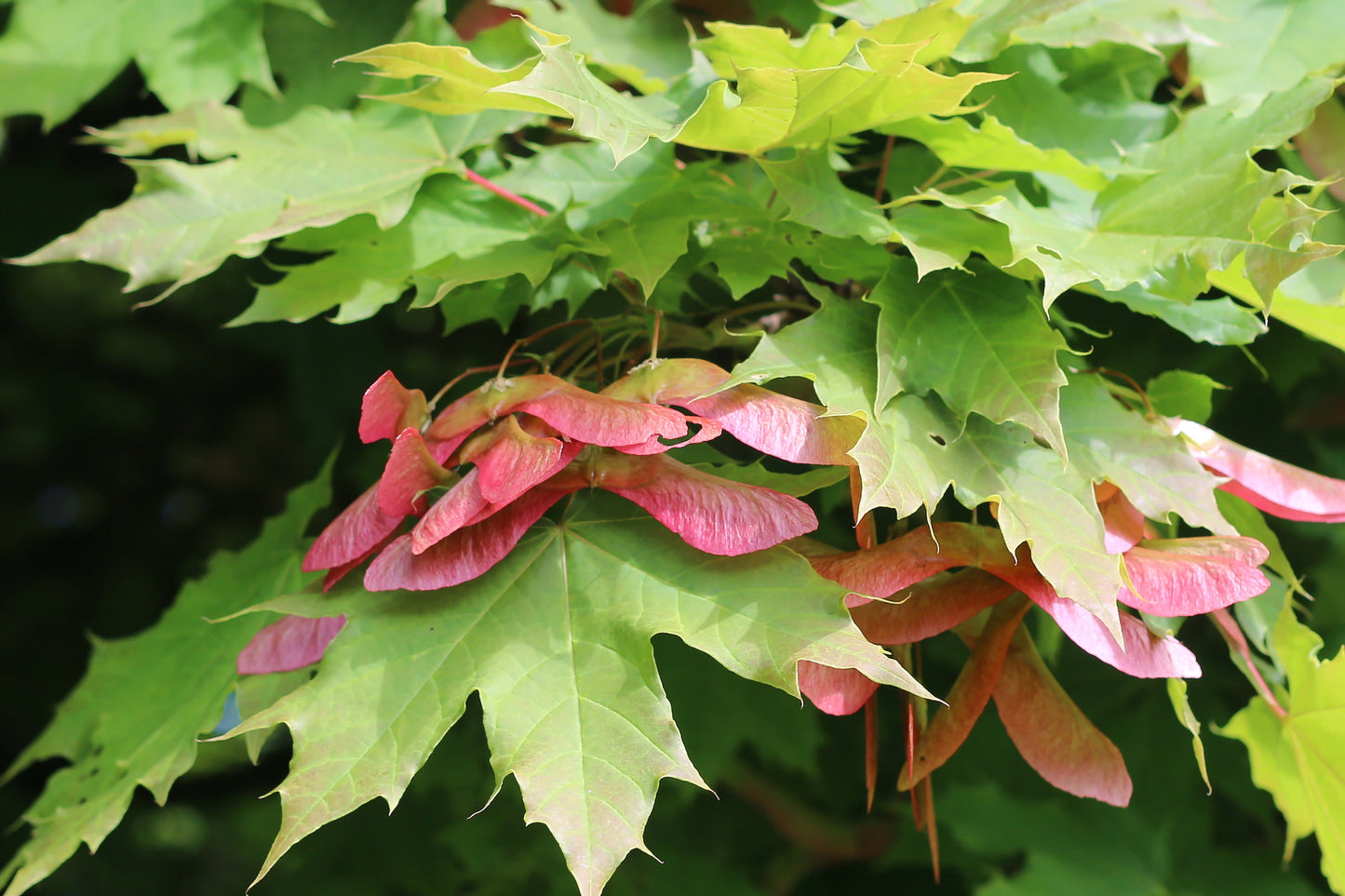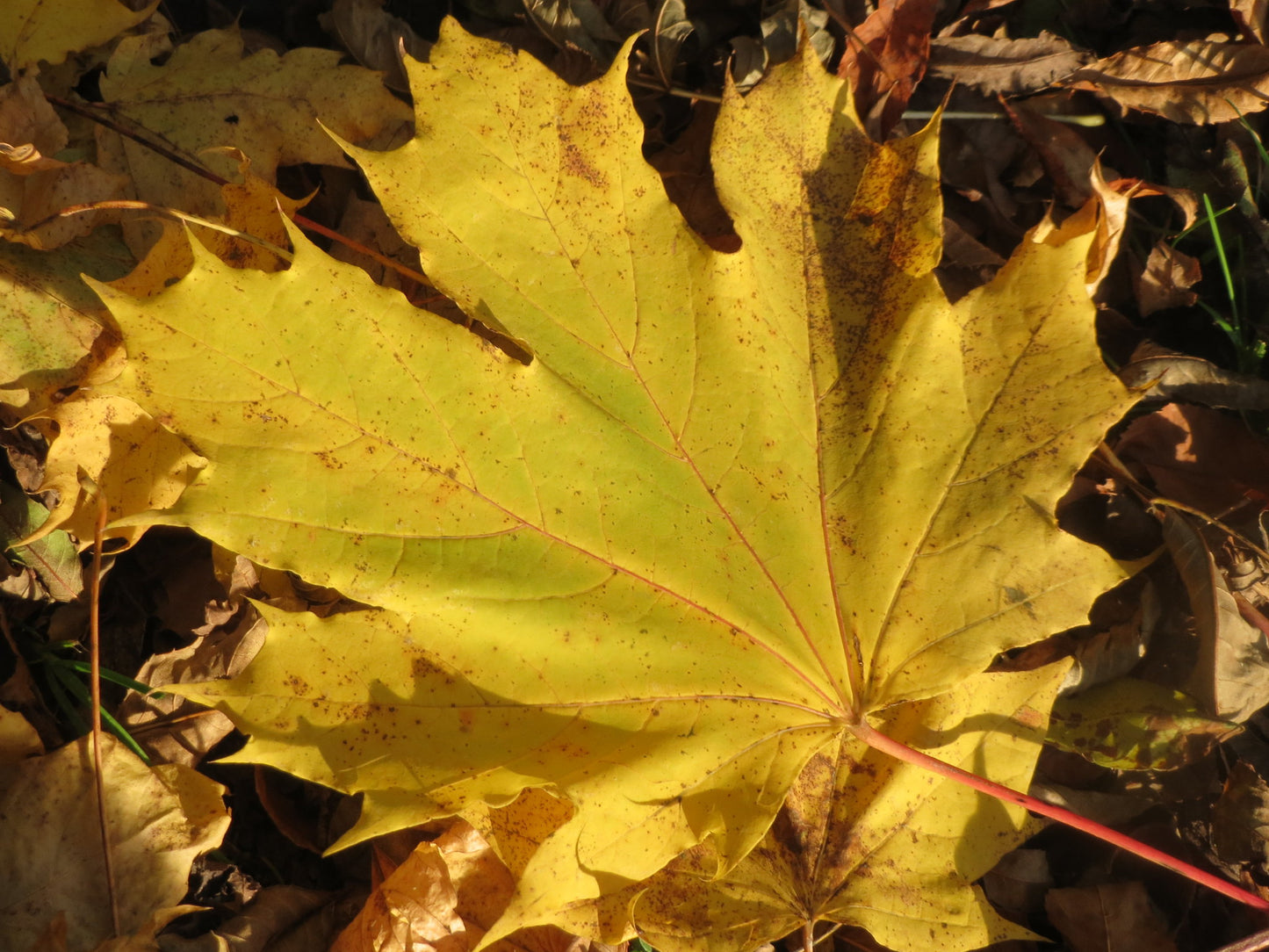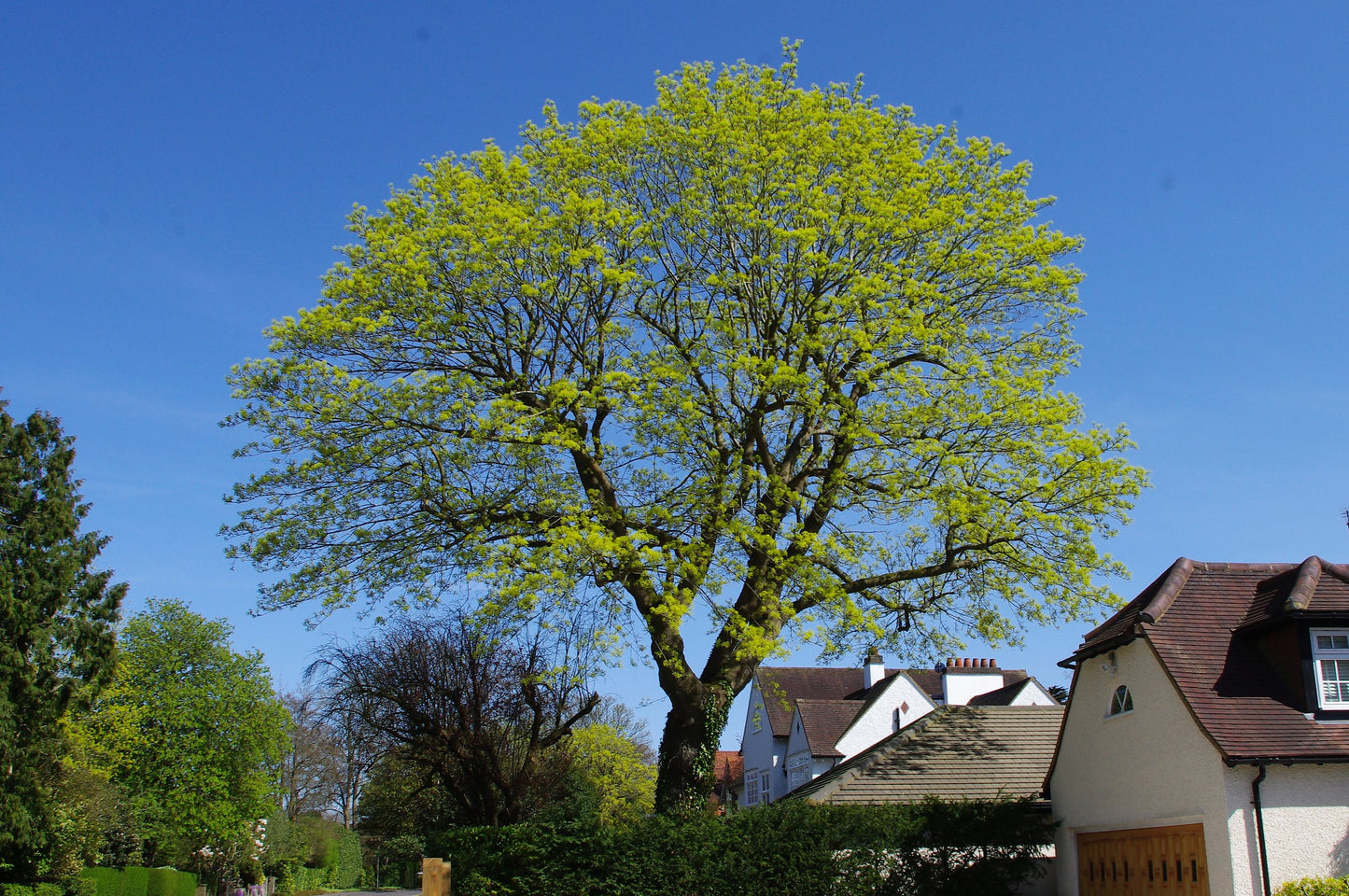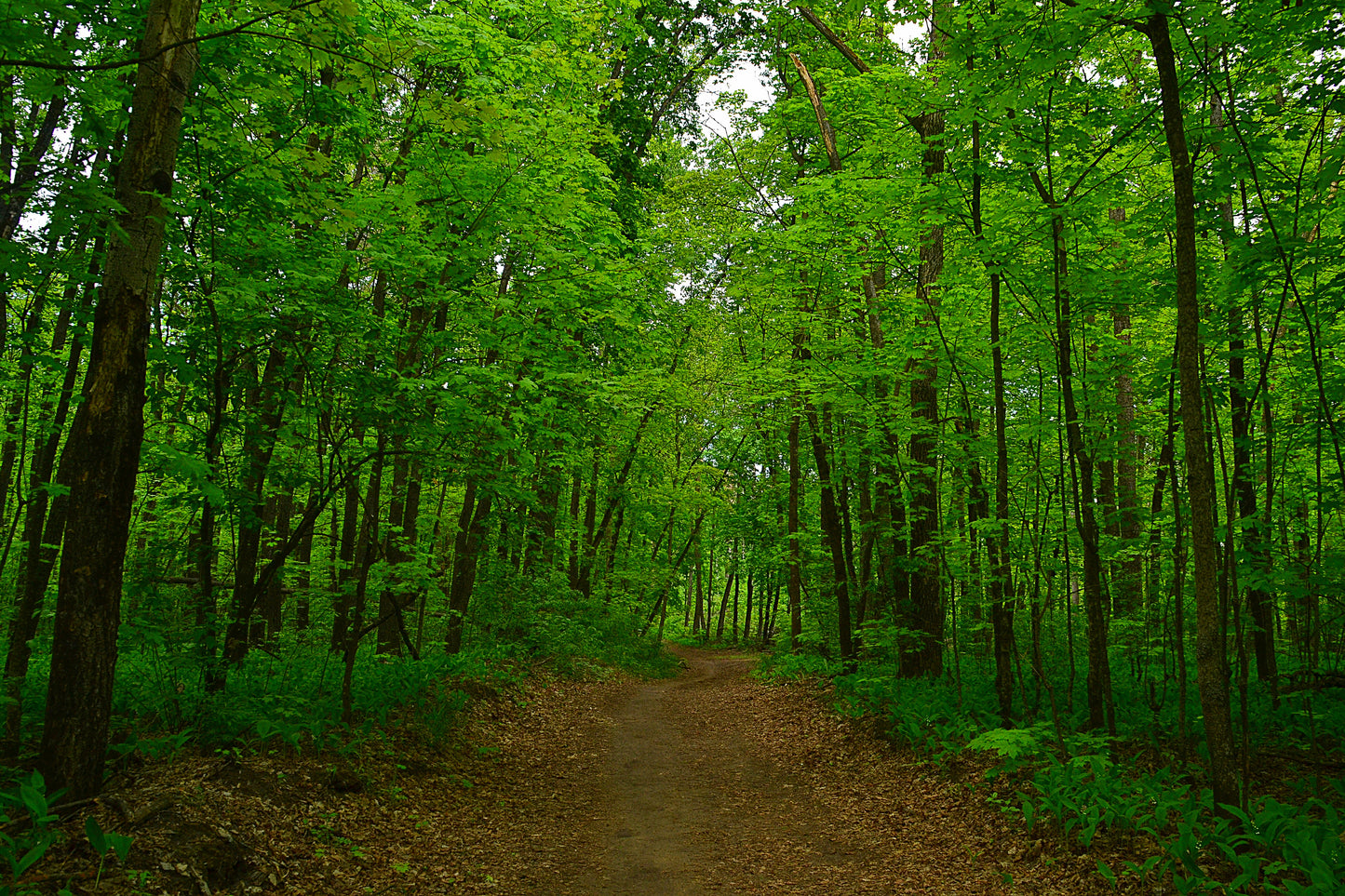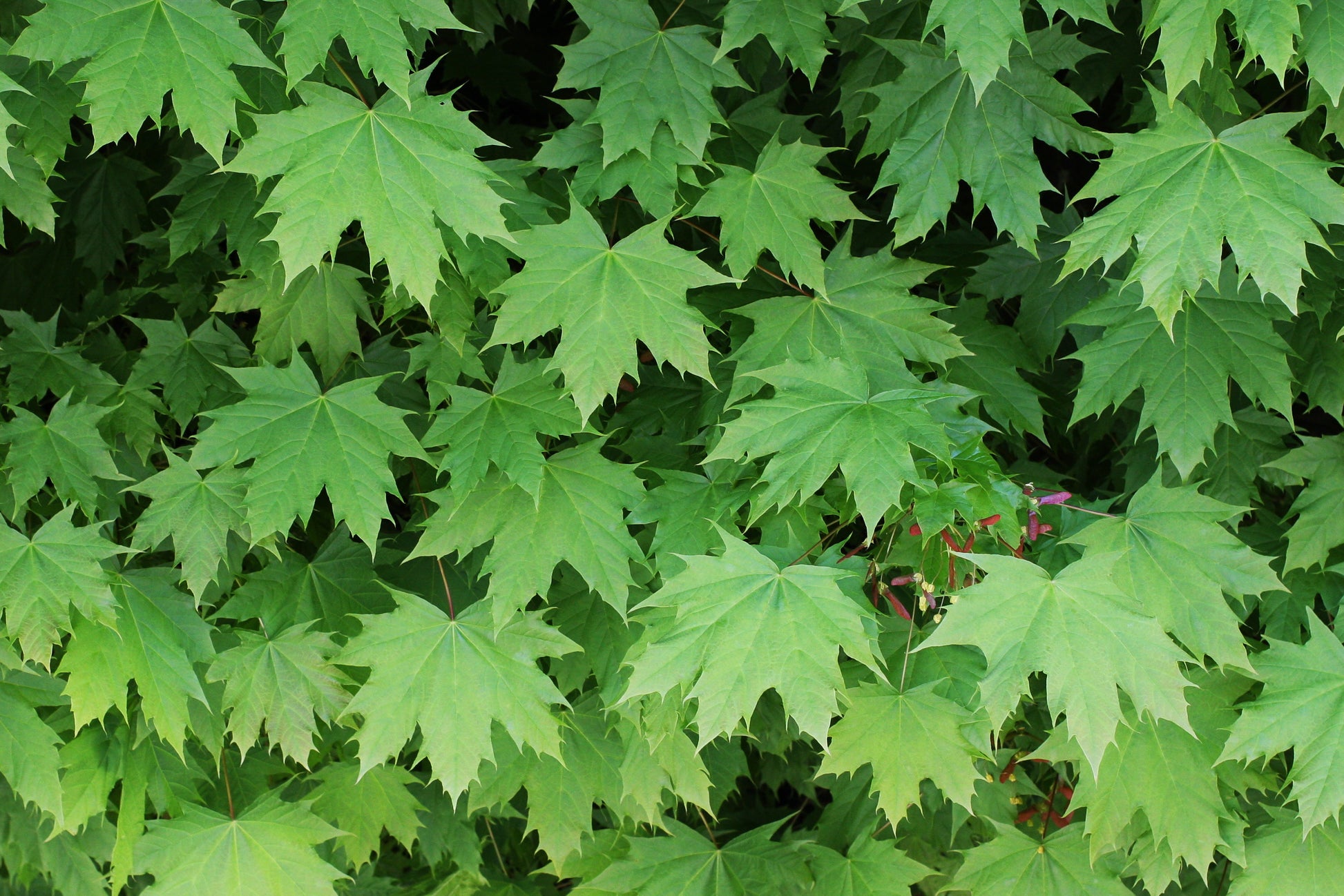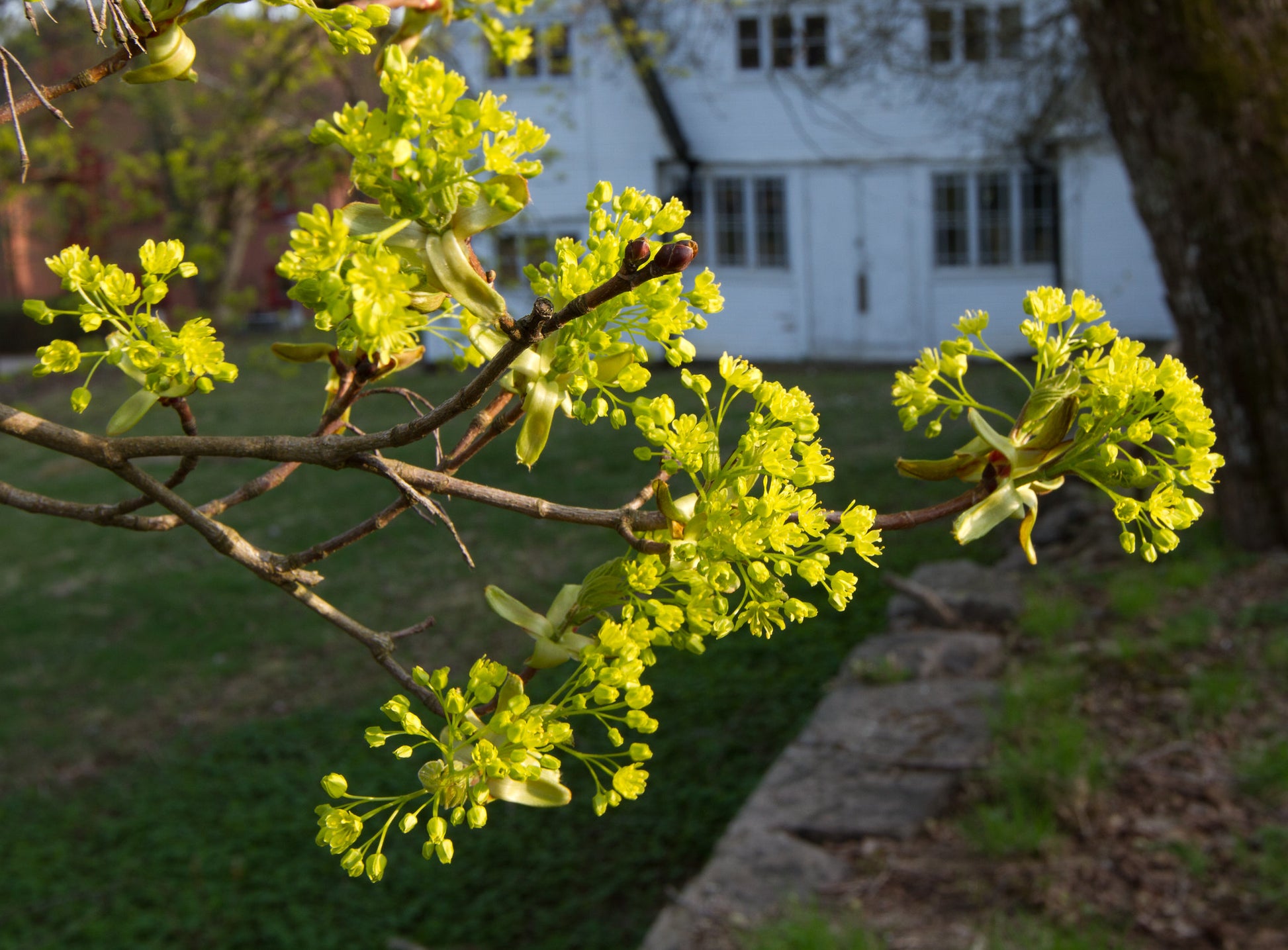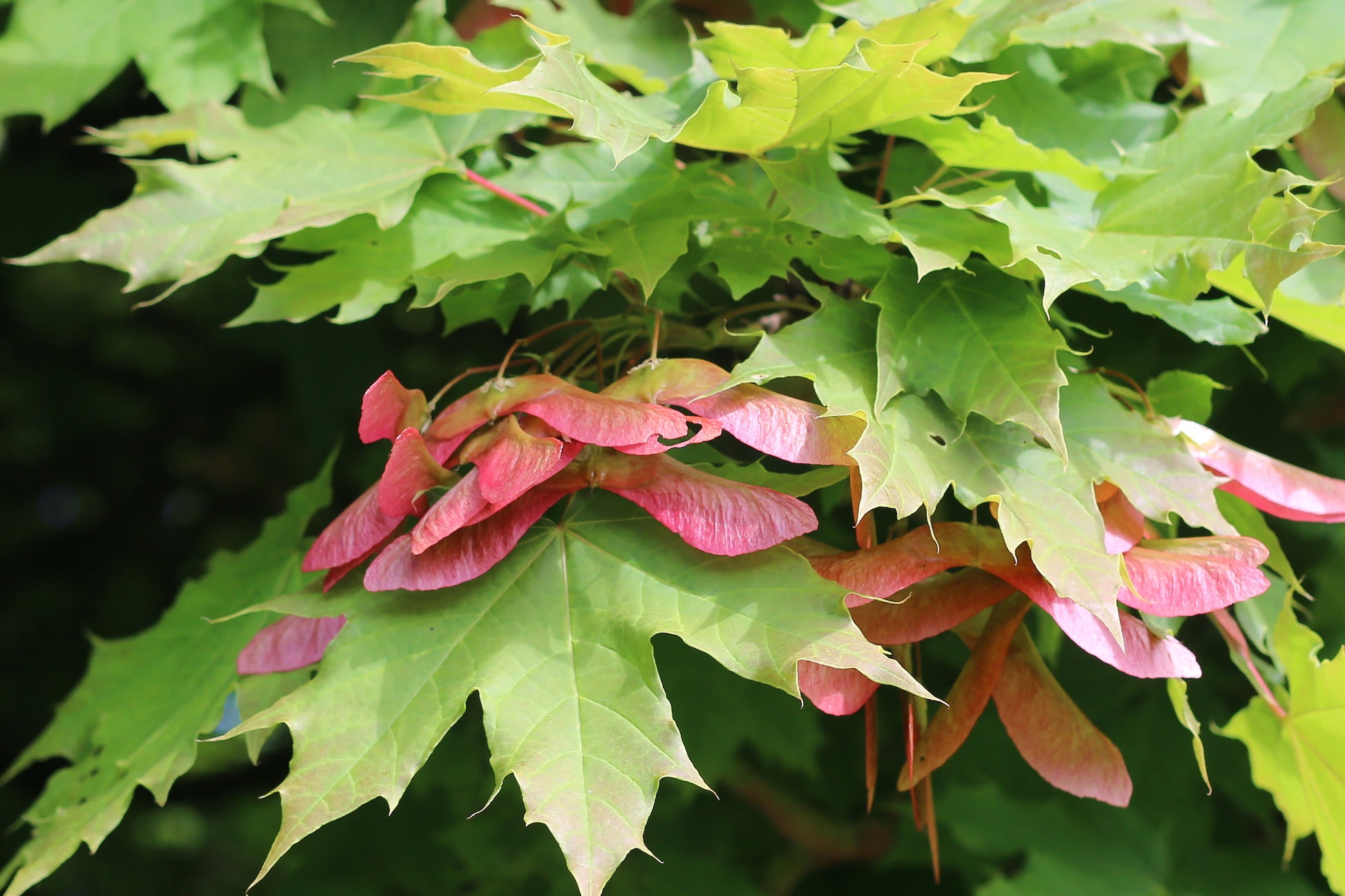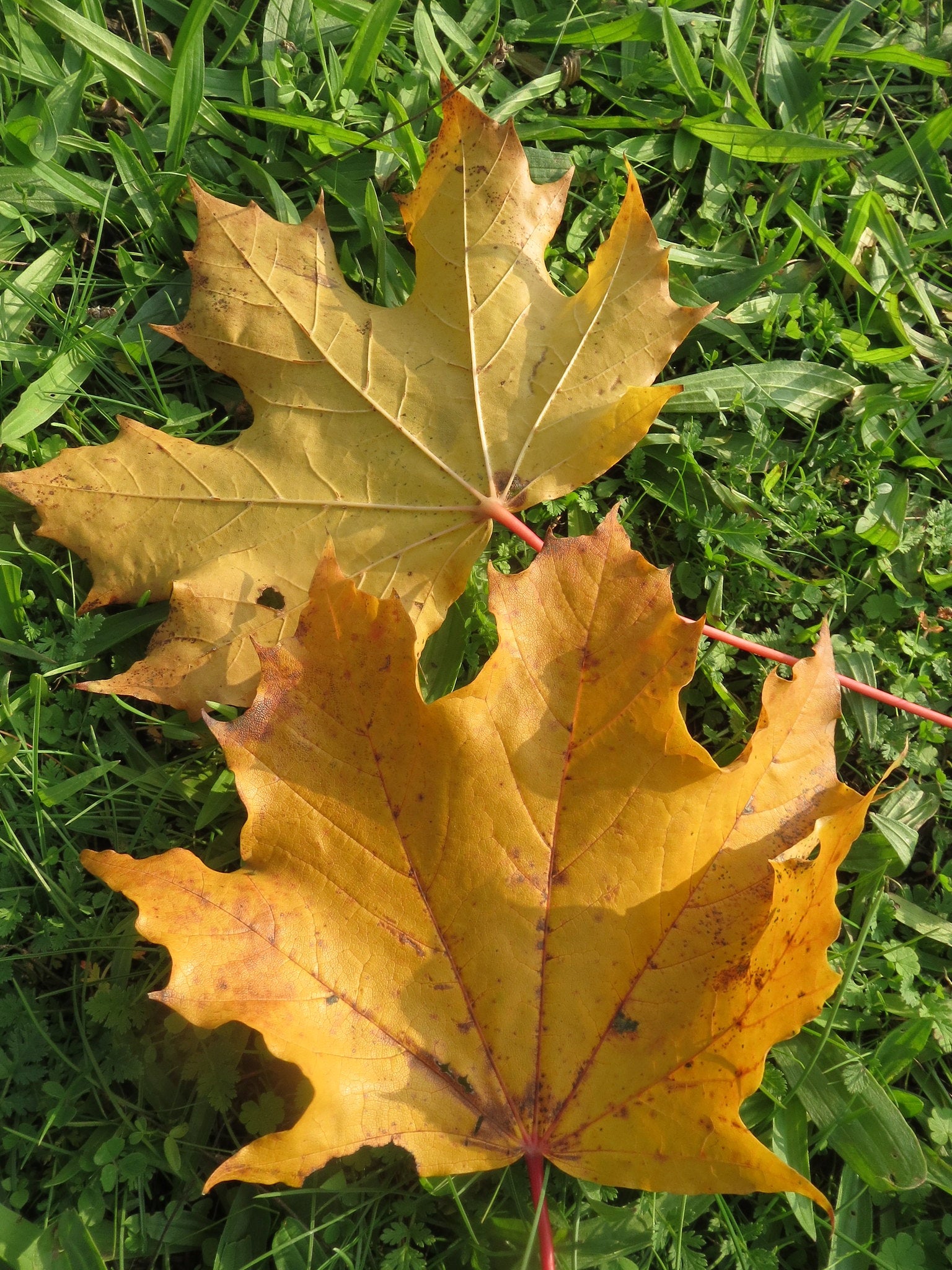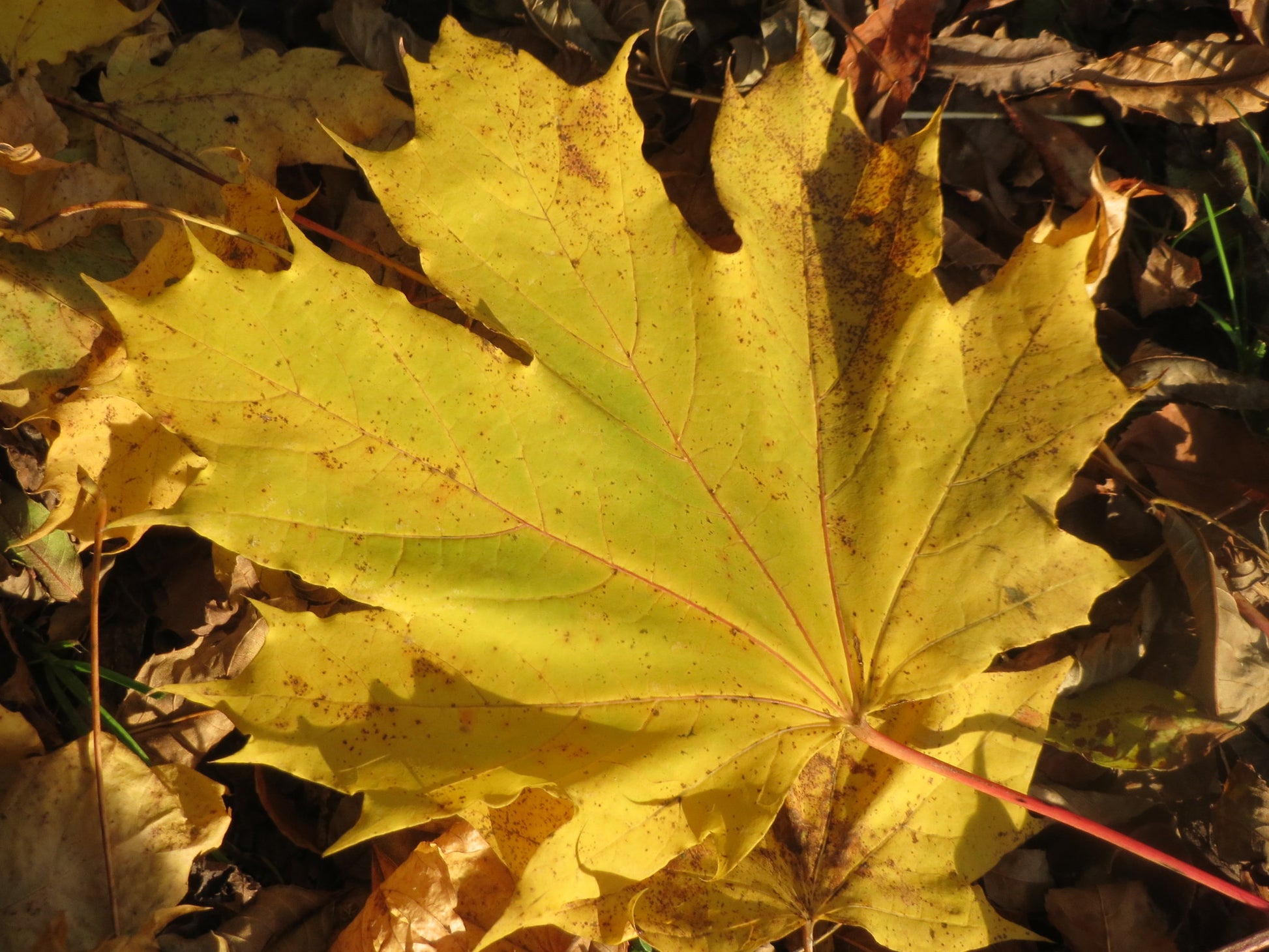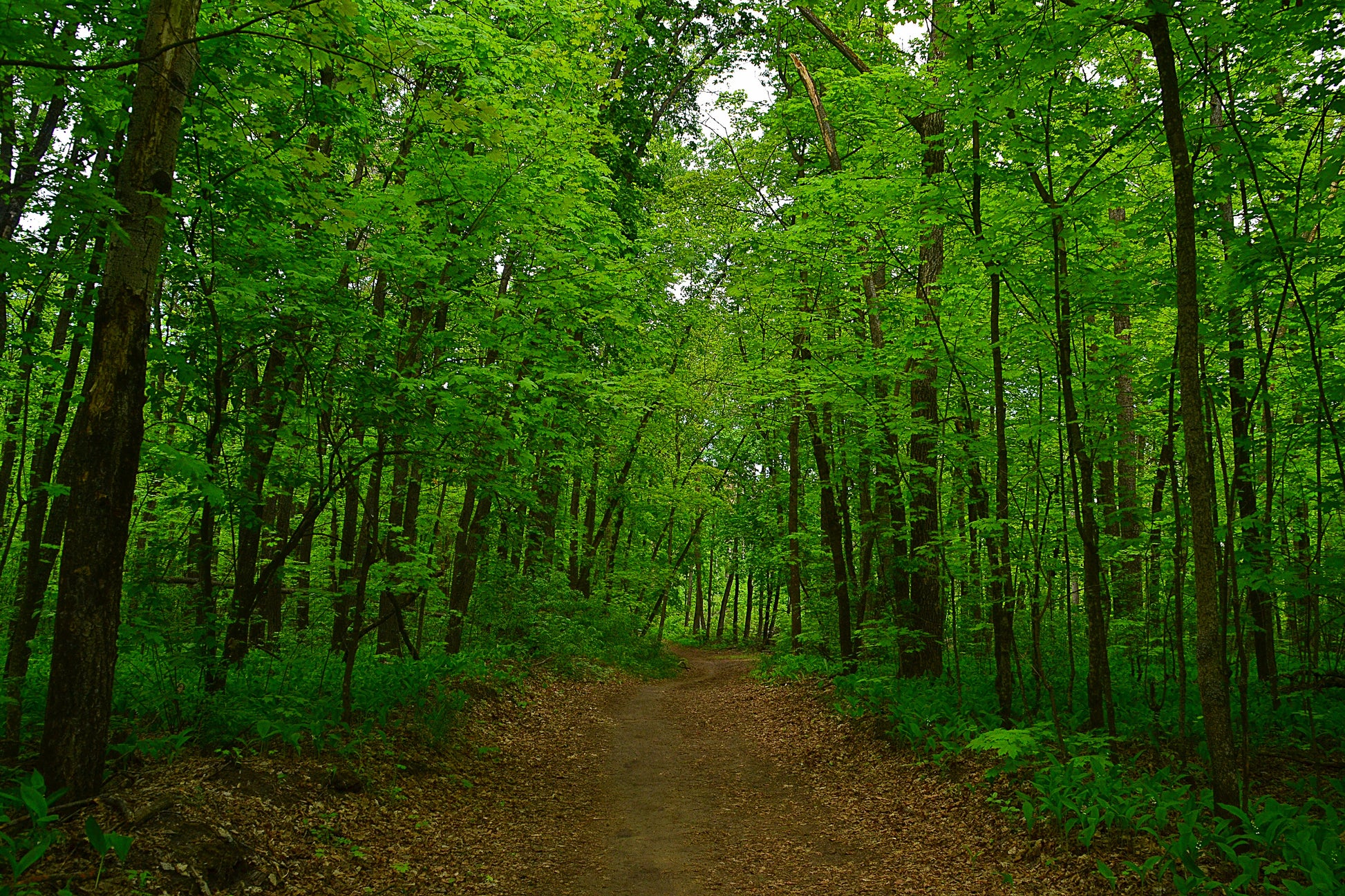Floridaseeds
Norway Maple Acer platanoides 100 Seeds USA Company
Norway Maple Acer platanoides 100 Seeds USA Company
Couldn't load pickup availability
Acer platanoides, commonly known as the Norway maple, is a deciduous tree native to Europe and parts of Asia. It belongs to the Acer genus and is widely cultivated as an ornamental tree in parks and gardens.
Here's a general description:
Appearance: Norway maple typically grows to a height of 50 to 60 feet, although it can sometimes reach up to 100 feet under optimal conditions. It has a broad, rounded crown with dense foliage. The bark is gray-brown and develops shallow furrows with age.
Leaves: The leaves are large, usually measuring 4 to 7 inches in width, and are arranged in opposite pairs along the stems. They have five lobes with serrated edges and a dark green color. In autumn, the foliage turns vibrant shades of yellow, orange, or red before falling.
Flowers: In spring, Norway maple produces small, yellow-green flowers that appear in clusters. While not particularly showy, they add a subtle charm to the tree.
Fruit: Following the flowers, Norway maple develops winged seeds called samaras. These seeds are arranged in pairs and have a characteristic helicopter-like structure, allowing them to be dispersed by wind.
Habitat and Growth: Norway maple thrives in various soil types and can tolerate urban environments well. It prefers full sun to partial shade and is adaptable to different climatic conditions.
Landscape Use: Due to its attractive foliage and dense canopy, Norway maple is often used as a shade tree in parks, streets, and gardens.
Cultural Significance: In addition to its ornamental value, Norway maple has been used in traditional medicine and woodworking. Its wood is fine-grained and durable, making it suitable for furniture and flooring. Hardy in zones 3-7.
Growing Instructions for the Norway Maple
The seeds have a period of dormancy. They can be planted outdoors in the fall or winter for spring germination or they can be cold stratified to simulate winter conditions and to break their dormancy at any time of the year. 1. Soak the seeds in water for several hours. 2. Put the seeds in a ziplock bag. 3. Put the bag in the refrigerator and leave it there for 4 months. 4. The seeds like moist, well-drained soil. Prepare a mixture of half potting soil and half sand, perlite or vermiculite. Put the soil in a pot. 5. Sow the seeds on the soil. 6. Cover the seeds with a layer of soil that is 1/4 of an inch thick. 7. Water the soil so that it is moist but not wet. 8. When the seedlings are a few inches tall, they can be transplanted.
Materials
Materials
Shipping & Returns
Shipping & Returns
Dimensions
Dimensions
Care Instructions
Care Instructions
Share
